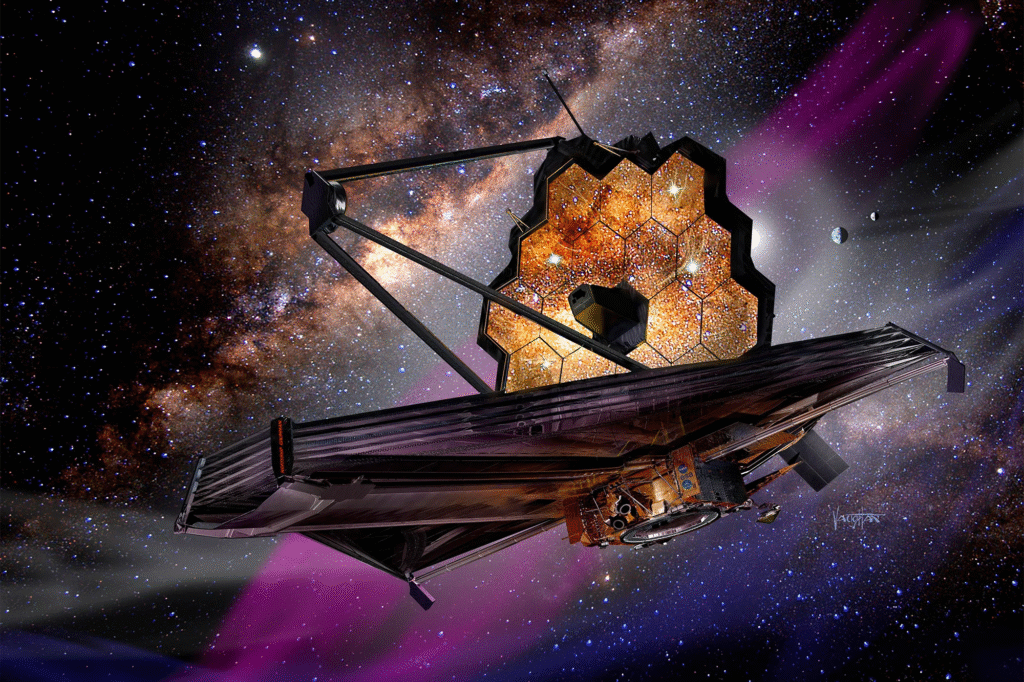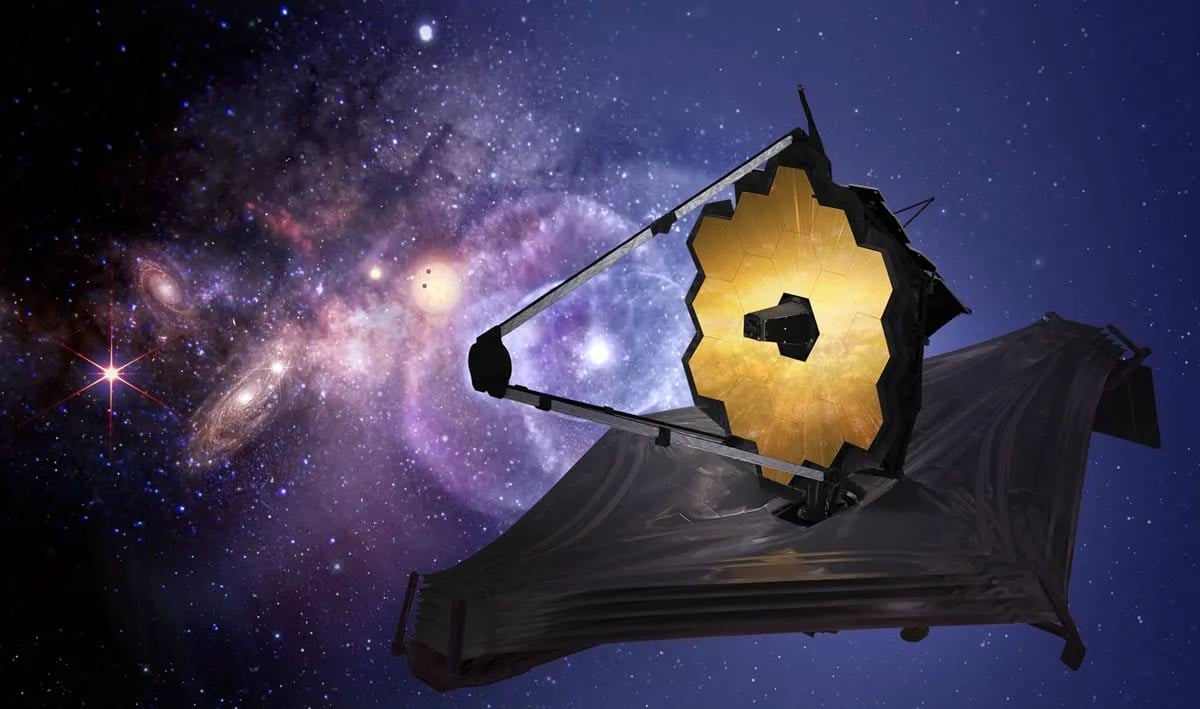The universe has always fascinated humanity, inspiring questions about our origins, distant galaxies, and the potential for life beyond Earth. The James Webb Telescope (JWST) stands as one of the most ambitious scientific instruments ever built, designed to answer some of these questions. Launched in December 2021, the telescope represents decades of technological innovation, international collaboration, and visionary scientific planning. In this article, we explore the significance of the James Webb Telescope, its groundbreaking capabilities, and the discoveries it is poised to make in the coming years.
What is the James Webb Telescope?
The James Webb Telescope is a space-based observatory developed by NASA in collaboration with the European Space Agency (ESA) and the Canadian Space Agency (CSA). It is often described as the successor to the Hubble Space Telescope, though its capabilities extend far beyond its predecessor.
Key facts about the James Webb Telescope include:
- Launch Date: December 25, 2021
- Launch Vehicle: Ariane 5 rocket
- Location: Orbiting at the second Lagrange point (L2), approximately 1.5 million kilometers from Earth
- Primary Mirror: 6.5 meters in diameter, composed of 18 hexagonal segments
- Wavelength Range: Primarily infrared, covering 0.6 to 28.5 microns
By observing in the infrared spectrum, the James Webb Telescope can see through cosmic dust and capture light from the earliest galaxies, helping astronomers study the formation of stars and planetary systems.
How the James Webb Telescope Works
Unlike traditional optical telescopes, the James Webb Telescope uses infrared light to peer deeper into space. Infrared radiation is emitted by warm objects, which allows the telescope to detect objects that are otherwise invisible in visible light.
1. The Primary Mirror
The telescope’s 6.5-meter mirror is one of its most impressive features. Made from lightweight beryllium and coated with gold, the mirror collects and focuses faint infrared light from distant celestial objects. Its segmented design allows it to fold for launch and expand once in space.
2. The Sunshield
The JWST is equipped with a sunshield the size of a tennis court, composed of five layers of heat-resistant material. This shield blocks heat and sunlight from reaching the telescope, maintaining its instruments at temperatures near -233°C (-388°F), which is essential for accurate infrared observations.
3. Scientific Instruments
The James Webb Telescope carries four main instruments:
- Near Infrared Camera (NIRCam): Captures high-resolution images in the near-infrared spectrum.
- Near Infrared Spectrograph (NIRSpec): Analyzes the chemical composition of stars, galaxies, and exoplanets.
- Mid-Infrared Instrument (MIRI): Observes longer infrared wavelengths, ideal for studying cooler celestial objects.
- Fine Guidance Sensor/Near InfraRed Imager and Slitless Spectrograph (FGS/NIRISS): Ensures precise pointing and conducts specialized observations of exoplanets.
Key Objectives of the James Webb Telescope
The James Webb Telescope has several groundbreaking objectives aimed at answering fundamental questions about the universe:
1. Observing the First Galaxies
One of the telescope’s primary goals is to study galaxies formed shortly after the Big Bang, over 13 billion years ago. By capturing light from these early galaxies, scientists can understand how the first stars ignited and how galaxies evolved over cosmic time.
2. Studying Exoplanets and Their Atmospheres
The JWST can analyze the atmospheres of exoplanets, detecting gases such as water vapor, methane, and carbon dioxide. This capability is crucial for identifying potentially habitable planets and understanding planetary formation processes.
3. Understanding Star Formation
By observing star-forming regions obscured by cosmic dust, the James Webb Telescope provides insights into how stars and planetary systems form. Its infrared capabilities allow astronomers to study dense molecular clouds that are invisible in optical light.
4. Investigating Cosmic Mysteries
The telescope will also contribute to solving major astrophysical questions, including the nature of dark matter, dark energy, and the evolution of supermassive black holes.
Early Discoveries from the James Webb Telescope
Since its deployment, the James Webb Telescope has already delivered remarkable discoveries:
- Deepest Infrared Images: Captured galaxies billions of light-years away, providing unprecedented detail of early cosmic structures.
- Atmospheric Analysis of Exoplanets: Detected water vapor and other molecules in exoplanet atmospheres, offering clues about habitability.
- Star-Forming Regions: Revealed intricate details of stellar nurseries previously hidden by cosmic dust.
These early observations demonstrate the telescope’s potential to revolutionize our understanding of the universe.
Technological Innovations Behind the James Webb Telescope

The James Webb Telescope represents decades of engineering and scientific ingenuity:
- Segmented Mirror Design: Allows a large mirror to fit into the launch vehicle and unfold in space.
- Cryogenic Cooling Systems: Maintains extremely low temperatures essential for infrared observation.
- Precision Alignment: Each mirror segment is adjustable with nanometer precision for optimal focus.
- Advanced Detectors: Capable of capturing faint infrared signals with minimal noise.
These innovations make the JWST a technological marvel, combining cutting-edge optics, materials science, and space engineering.
Collaboration and Global Impact
The success of the James Webb Telescope is a result of international collaboration. NASA, ESA, and CSA contributed expertise, funding, and technology. This global partnership highlights the importance of collective effort in tackling some of the most complex scientific challenges.
The telescope also inspires future generations of scientists, engineers, and astronomers, showing that ambitious projects can push the boundaries of knowledge and technology.
Challenges and Risks
Despite its successes, the James Webb Telescope faced significant challenges:
- Cost Overruns: The project cost over $10 billion, with multiple delays spanning more than a decade.
- Deployment Risks: The telescope’s complex unfolding process in space had to work perfectly; any malfunction could compromise the mission.
- Operational Challenges: Maintaining precise alignment, cryogenic temperatures, and uninterrupted communication with Earth is critical for continued operation.
The successful deployment and early operation of the JWST are testaments to careful planning, rigorous testing, and international teamwork.
The Future of the James Webb Telescope
Over the next decade, the James Webb Telescope is expected to:
- Map the formation of galaxies over cosmic time.
- Conduct detailed surveys of exoplanet atmospheres.
- Explore dark matter and dark energy phenomena.
- Complement other observatories, such as Hubble and the upcoming Nancy Grace Roman Telescope, to provide a multi-wavelength view of the universe.
Its findings will shape the direction of astronomy and astrophysics for years to come.
Conclusion
The James Webb Telescope is more than a scientific instrument—it is a symbol of human curiosity, ingenuity, and the desire to understand the cosmos. By peering into the universe’s distant past, studying exoplanets, and uncovering hidden celestial phenomena, it is poised to answer some of humanity’s most profound questions.
From technological breakthroughs to international collaboration, the JWST embodies the potential of science to expand our knowledge and inspire future generations. As it continues to deliver groundbreaking discoveries, the James Webb Telescope will remain at the forefront of astronomical exploration, shaping our understanding of the universe for decades to come.





